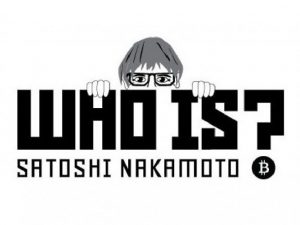
For close to ten years many people have been on the hunt for the elusive Satoshi Nakamoto, creator of the decentralized technology called Bitcoin. This year the race to find the anonymous character, or group of individuals, who designed the peer-to-peer electronic cash system has been hotter than ever with more clues left behind — Here’s what we know so far.
**This is part one of a two-part story. Part two features a full-length interview with a man who claims to be a member of the Satoshi Nakamoto group, but has no verifiable proof.**
Ten Years Worth of Satoshi Nakamoto Suspects, Dead Ends, and Now the Growing Trend of Group Theories
 Satoshi Nakamoto is the anonymous creator of the Bitcoin technology and the entire cryptocurrency economy today is based on Nakamoto’s words and original code. Satoshi is an unknown person or group who wrote the original white paper, launched the network, made the first transaction, communicated with software developers between 2008-2010, and possibly possesses over 1 million bitcoins. Since the creation of blockchain technology lots of people and news-outlets like Newsweek, Wired, Gizmodo, BBC, GQ, New York Times, Bloomberg, Fast Company, and many others have tried to uncover the mystery. There’s a lot of evidence, clues, and research on the subject and multiple suspects.
Satoshi Nakamoto is the anonymous creator of the Bitcoin technology and the entire cryptocurrency economy today is based on Nakamoto’s words and original code. Satoshi is an unknown person or group who wrote the original white paper, launched the network, made the first transaction, communicated with software developers between 2008-2010, and possibly possesses over 1 million bitcoins. Since the creation of blockchain technology lots of people and news-outlets like Newsweek, Wired, Gizmodo, BBC, GQ, New York Times, Bloomberg, Fast Company, and many others have tried to uncover the mystery. There’s a lot of evidence, clues, and research on the subject and multiple suspects.
Some people believe knowing who Satoshi is doesn’t matter. Other people believe Bitcoin’s creator does matter, as he could possibly help with scaling conflicts, and then there’s the possibility of the alleged 1M bitcoins mined could affect the price if they were dumped on the market. Either way the hunt for Satoshi just out of mere curiosity alone has encouraged armchair sleuths and journalists to seek out the unknown person(s).
A Crypto Genius

One of the first suspects in the search for Nakamoto is Hal Finney, a man who worked with Satoshi during the early days testing the protocol. Finney was an excellent cryptographer and was allegedly the first person to run the original Bitcoin protocol. Back in 2014 the journalist Andy Greenberg wrote an article called “Nakamoto’s Neighbor: My Hunt For Bitcoin’s Creator Led To A Paralyzed Crypto Genius” which explains that Hal Finney could have been Satoshi. According to Greenberg’s article, Finney could have also helped the Satoshi group ‘ghost write’ some of the writings shared online. The reason this theory is bolstered is because the well-known writing analysis organization, Juola & Associates, detailed that Nakamoto’s and Finney’s writings had the closest resemblance.
Similar Writing Style

Another accused person who many people believe is Satoshi is the computer scientist Nick Szabo. The financial author Dominic Frisby had shown some circumstantial evidence in his novel connecting Szabo to Nakamoto. Szabo has denied being Nakamoto in an email to Frisby concerning the subject. Furthermore, Szabo has been linked to Satoshi Nakamoto through a writing analysis called stylometry. A writer named Skye Grey (and others) seem to believe Szabo’s writings are very similar to the Bitcoin white paper.
The Fake News Victim

In 2014 the reporter Leah McGrath Goodman wrote an article for the publication Newsweek which said a Japanese American man living in California was the elusive creator of Bitcoin. Dorian Prentice Satoshi Nakamoto, whose real birth name is Satoshi Nakamoto, is an engineer who worked on many classified defense projects as a contractor for multiple businesses. The Newsweek reporter’s ‘evidence’ was when she asked Dorian about Bitcoin he replied: “I am no longer involved in that and I cannot discuss it.” However, after the article had published Dorian denied being involved with the creation of the Bitcoin technology and said he misinterpreted Goodman’s original question. Dorian has been praised as a lovable guy who was a victim of bad journalism.
Craig Wright & the Group
The Australian academic Craig Steven Wright first got major attention on December 8, 2015, after appearing with his partner David Kleiman in two articles written by Wired, and then Gizmodo. Allegedly a hacker had stolen emails from Wright which explain that he and Kleiman were part of the Satoshi Nakamoto group, which may also have had 1-2 more players. There are numerous other articles by Motherboard Vice, and others that have different clues to the Craig Wright case. After the articles, Wright subsequently deleted his online presence and wasn’t heard from again until May 2, 2016.

In 2016, Wright reappeared and claimed he was Satoshi Nakamoto, and when he returned both Gavin Andresen and Jon Matonis vouched for his claim. Furthermore, Wright attempted to show cryptographic proof that he was Satoshi Nakamoto, but these claims were refuted by some researchers and called fraudulent by others.

Now this year more clues have been unraveling in regard to the Craig Wright case. Back in February 2018, Wright was sued for billions by the family of David Kleiman. The case 9:18-cv-80176-bb filed in Florida explains the plaintiff Ira Kleiman wants a settlement for 300,000BTC. According to the case, which also corroborates with the Wired and Gizmodo articles, the court documents explain that Wright, Kleiman, and possibly others have keys to a BTC trust held in escrow in Seychelles which may unlock in 2020. The ‘Tulip Trust’ will allegedly give Wright 1 million BTC, and Ira Kleiman (David’s sibling) believes his brother’s estate deserves their share. Evidence online shows that Wright and Kleiman were partners in business, along with a secretary named Uyen Nguyen whose online presence has disappeared. Other than that, the main evidence from case 9:18-cv-80176-bb stems from the emails Ira Kleiman has and stories his brother David told him.

Another Player?
Then on August 29, a man named Phil Wilson, who has written some interesting topics on the origins of Bitcoin last year, discussed the ‘Tulip Trust’ on Twitter. Wilson claims to be a member of the Satoshi Nakamoto group, and worked with Wright and Kleiman on the project during the Genesis days. Wilson has also written about the creation of the Bitcoin logo, and explains that he was the person who designed the original symbol. However Wilson says “I don’t have access to any emails or IRC logs to reference and confirm specific events, actions or dates, but it’s not complete fiction because some of the main events took place similarly to how I’ve recalled them.” Wilson says his “assistants/ surrogates” were Dave Kleiman and Craig Wright, and they mostly knew him as ‘Jamie.’ Moreover, Wilson details that on January 1, 2020, the 1 million BTC in the trust addresses will unlock and Wright will have access to the funds.
News.Bitcoin.com Speaks With Phil Wilson AKA ‘Jamie Wilson or Scronty’
However, a few days later after Wilson tweeted about the ‘Tulip Trust,’ Wright wrote four posts on Twitter specifically directed at Wilson’s recent statements and origin story.
“One thing I will say — Phil Wilson knew nothing at all about bitcoin before 2011 and that he tried to extort me for money — I shall provide sufficient evidence to enable a criminal fraud prosecution against “Scronty,” explains Craig Wright on August 31. “This material shall be compiled and released in September — It shall include his extortion attempt and far more — Sorry — He has nothing to do with Bitcoin, and his fall will be an example.”
There is no Phil ‘Jamie’ Wilson — Jamie Wilson is a completely separate person to Phil Wilson. So, any emails involving myself and Jamie are unrelated to P Wilson’s identity fraud.
An Interview With Phil Wilson Part One

Following this, news.Bitcoin.com discussed the Bitcoin ‘origins’ story with Phil Wilson who doesn’t have any hard evidence that he was part of the group, but says he has the right to express his memories. We asked him about the latest Twitter statements Craig Wright was writing publicly about him and his online alias ‘Scronty.’
“Craig seems to be a tad aggressive towards a supposed ‘no-body,’” Wilson explains to news.Bitcoin.com.
News.Bitcoin.com (BC): Ok. But you say you worked with Craig and Dave?
Phil Wilson (PW): I initially was trying to help Craig with his attempt at an electronic cash. I left his project in mid-May 2008 when it became apparent that it would never work. Then I started my own project in early June 2008 and got Dave and Craig to help me with it.
BC: That would be the original client?
PW: Yep — What everyone knows as Bitcoin evolved out of my project, not Craig’s. Practically nothing from his code was left. Only the generic crypto functions were taken from his codebase (which was copy/ pasted from elsewhere). The white paper he’d been working on from before 2007 was effectively thrown out. It was complete junk. Just a mish-mash of other people’s white papers.
To be continued: The rest of the interview with Phil Wilson will be published in its entirety in the next part of this story.
What do you think about the latest clues concerning Satoshi Nakamoto’s identity? Do you believe any of these theories and claims? Let us know what you think in the comment section below.
Images via Shutterstock, Wiki Commons, Twitter, Gizmodo, Newsweek, and Pixabay.
At news.Bitcoin.com all comments containing links are automatically held up for moderation in the Disqus system. That means an editor has to take a look at the comment to approve it. This is due to the many, repetitive, spam and scam links people post under our articles. We do not censor any comment content based on politics or personal opinions. So, please be patient. Your comment will be published.
The post New Information Heightens Satoshi Nakamoto Mystery appeared first on Bitcoin News.

Bitcoin.com is author of this content, TheBitcoinNews.com is is not responsible for the content of external sites.
Our Social Networks: Facebook Instagram Pinterest Reddit Telegram Twitter Youtube










